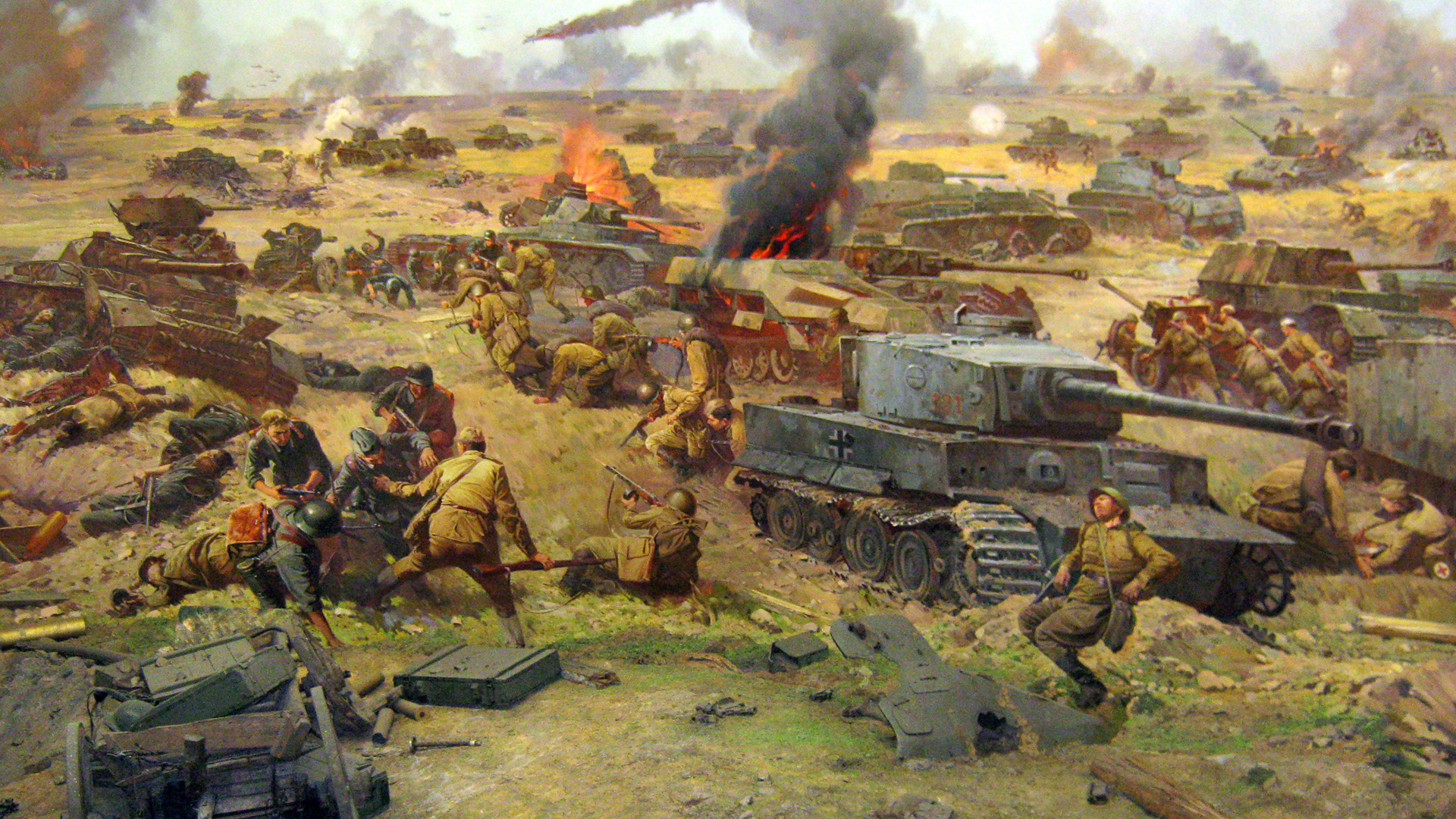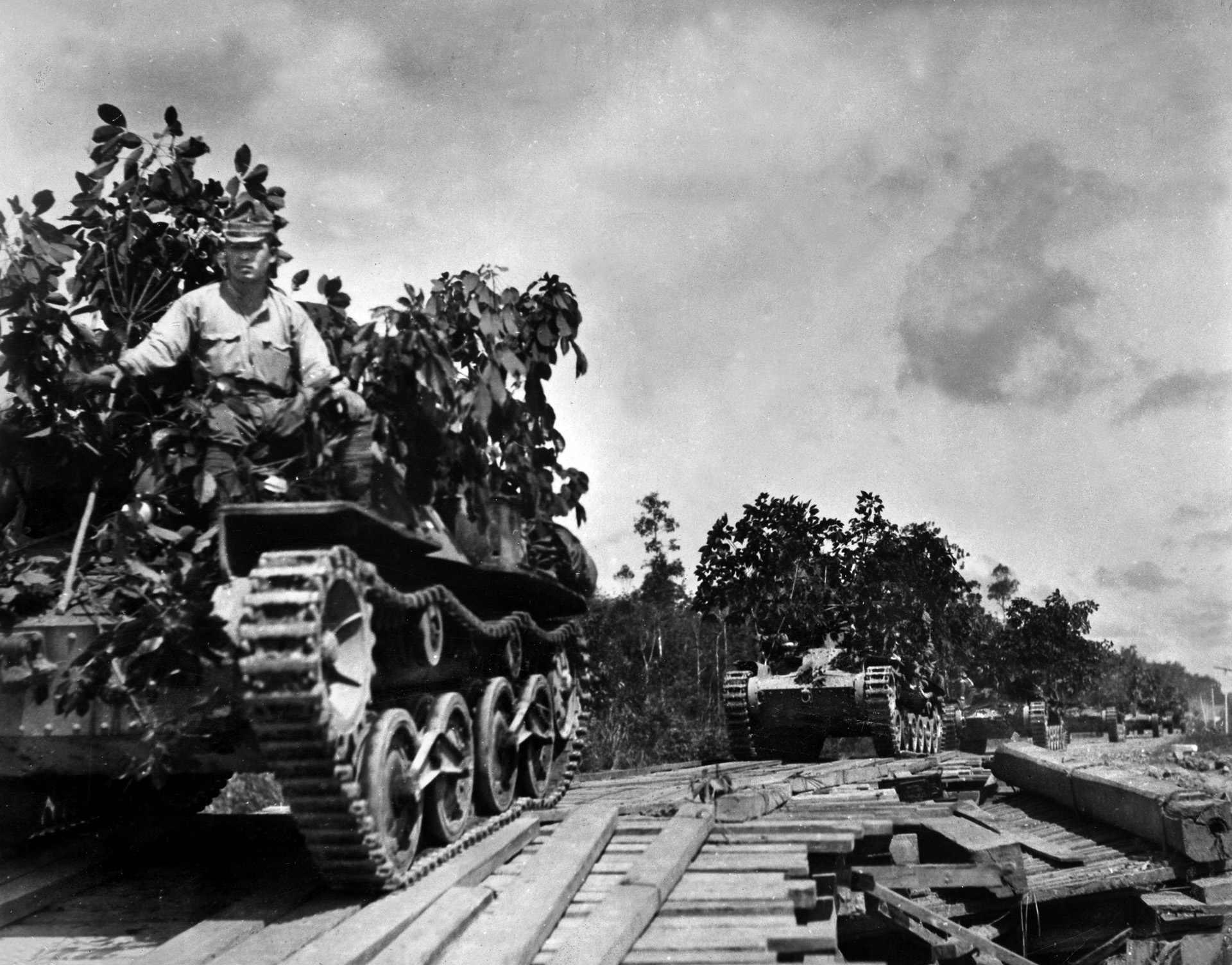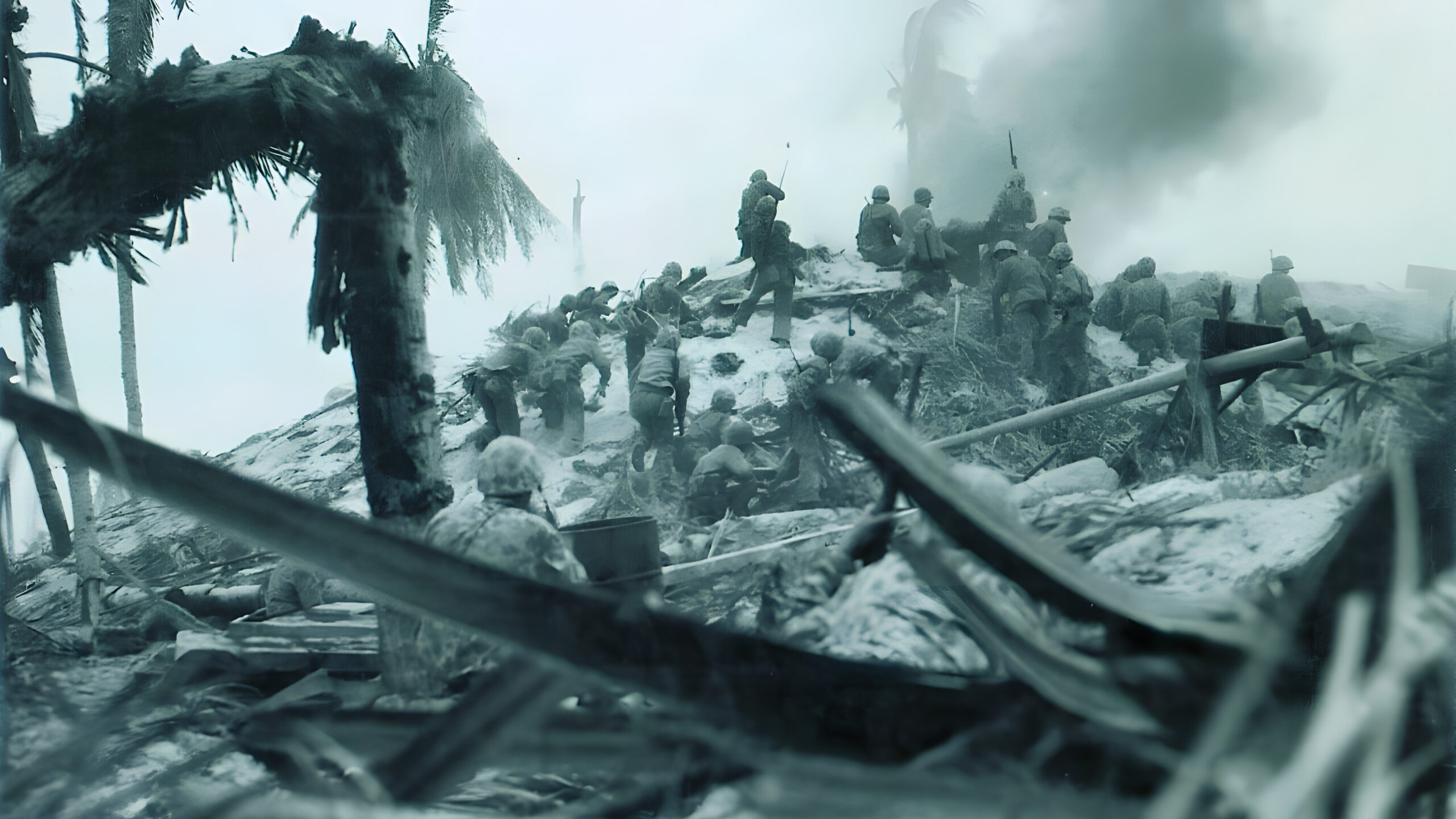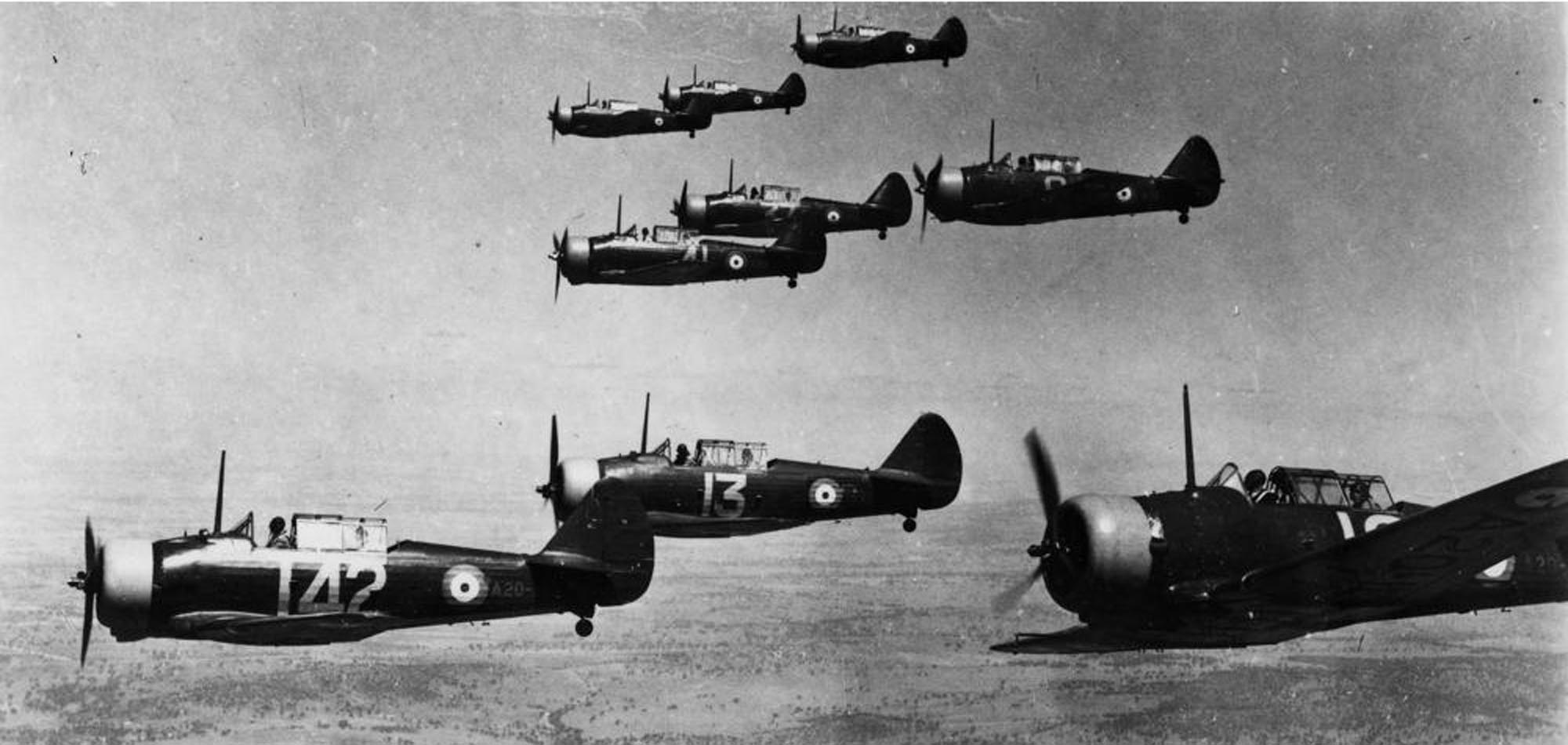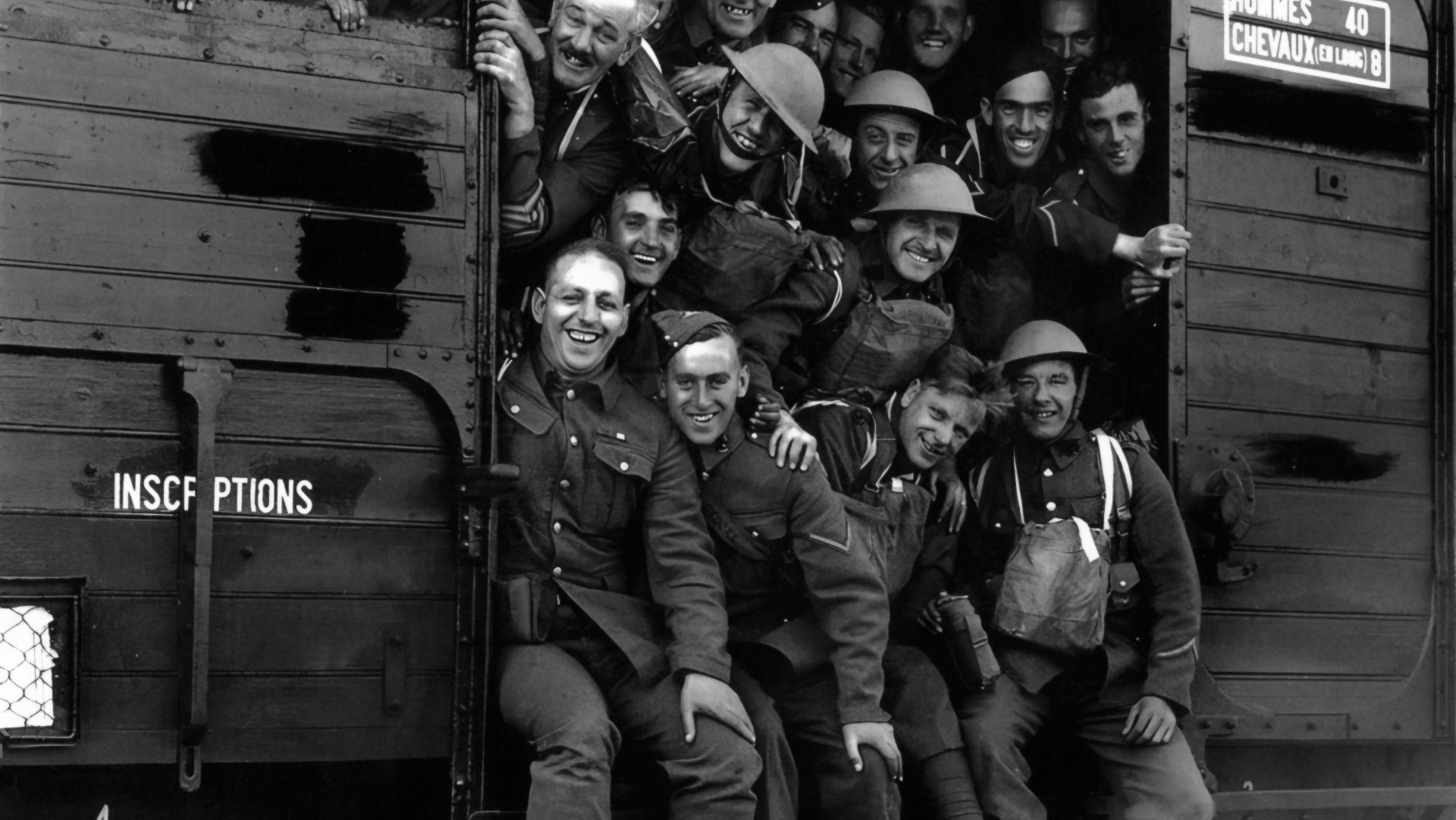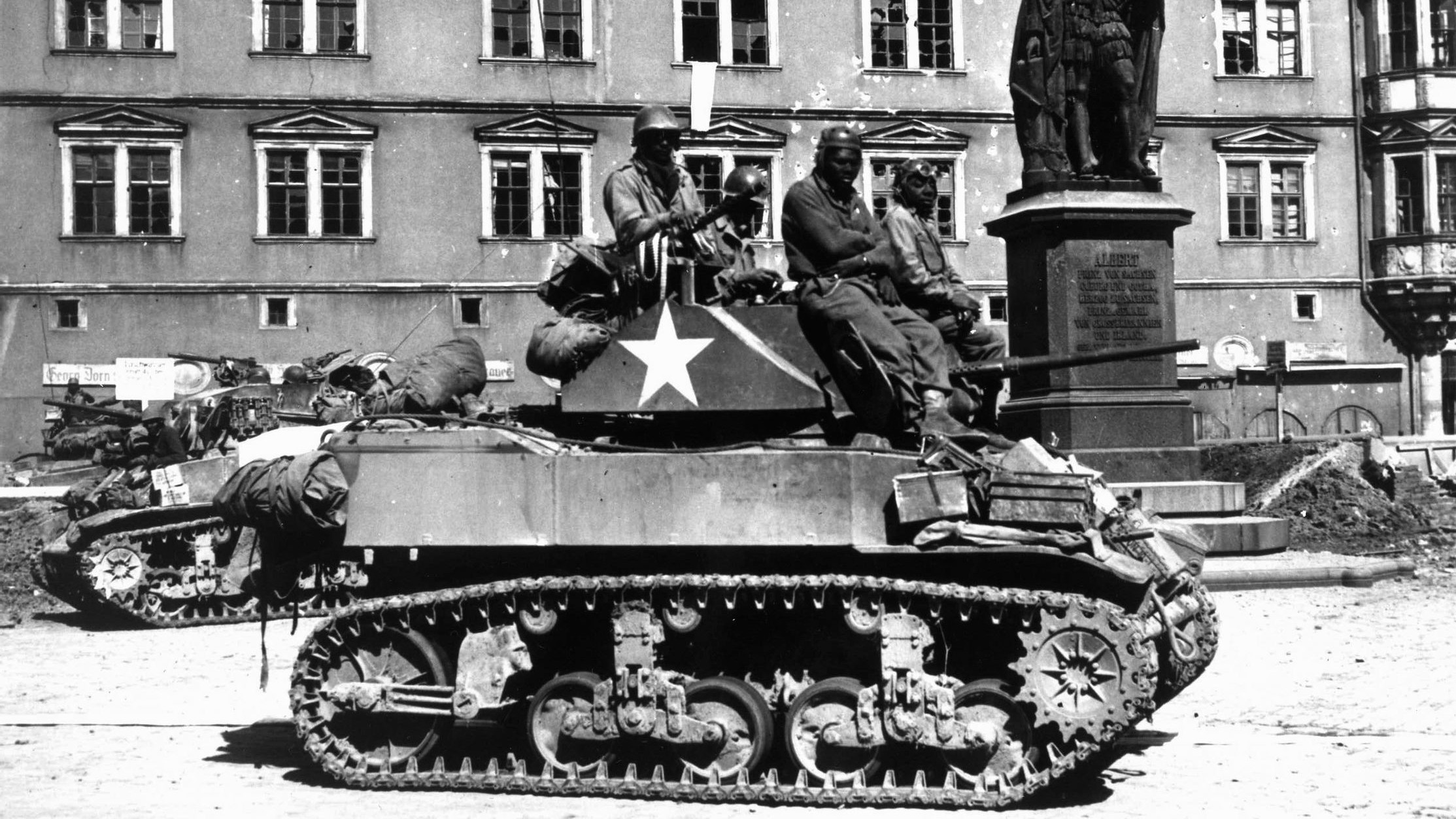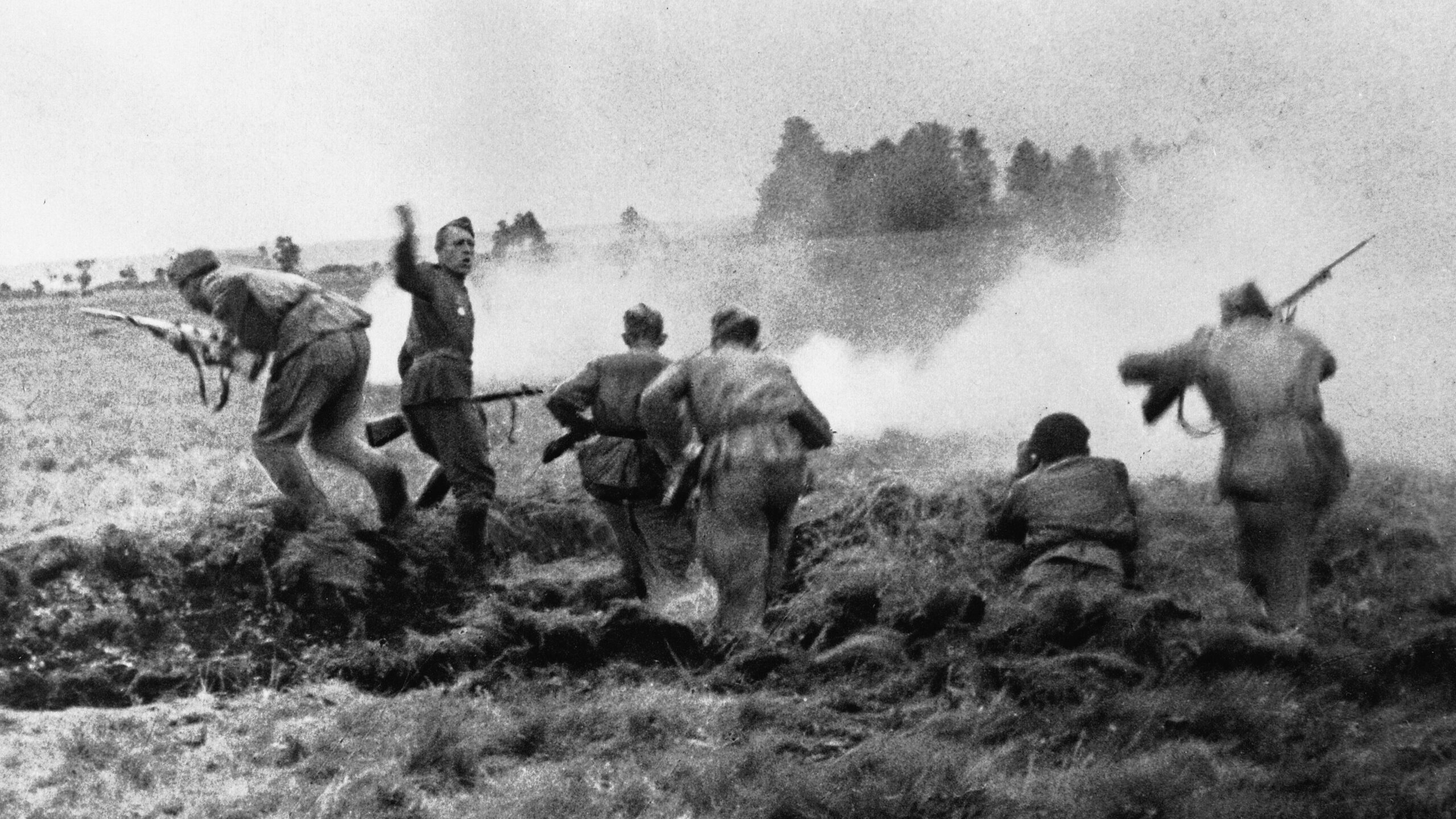By William F. Floyd, Jr.
When Colonel-General Heinz Guderian, chief of the German General Staff, presented German leader Adolf Hitler with estimates of Russian strength for Operation Barbarossa, Hitler declared that the numbers were “completely idiotic” and “pure bluff.” These comments were coming from someone who for some time had deployed thin Panzer brigades that were only two battalions strong and divisions that were barely the size of regiments. It seemed that Guderian was now attributing the same organizational methods to the Soviet Union. Guderian’s estimates had been drawn up by Lt. Col. Reinhard Gehlen, a senior intelligence officer with the Foreign Armies East military intelligence unit of the Oberkommando der Wehrmacht.
Hitler’s response was to order Gehlen to be committed to an insane asylum. Guderian, who held a very high opinion of Gehlen and considered him to be one of his most able staff officers, successfully deflected Hitler’s rage, allowing Gehlen to continue his important work for the German Wehrmacht.
Gehlen’s estimates were not very precise; indeed, he estimated that the Russians had as many as 225 divisions when their actual total was 180 infantry divisions. Even though these estimates were somewhat inflated, Guderian remained confident that the German juggernaut would easily crush the Russians. “The Eastern Front is like a house of cards,” said Guderian. “If the front is broken through at one point, all the rest will collapse.”
Reinhard Gehlen had been part of a working staff formed by Colonel-General Franz Halder before the war. The group was formed with the purpose of challenging the rival influence of General Wilhelm Keitel and Colonel-General Alfred Jodl in the Oberkommando des Heeres (OKH) concerning plans for the invasion of Poland.
Halder had ordered Gehlen, who was a major at the time and head of the Fortifications Group of the Operations Branch, to review the plans for a strong defense of the eastern borders of German territory. A week later the striking force was reinforced in the East with panzer and motorized divisions. The initial position held by the OKH was that the Soviet Union could be overrun like Poland in a swift autumn campaign. This position most likely was based on the study that had been conducted by Gehlen’s Foreign Armies East intelligence unit.
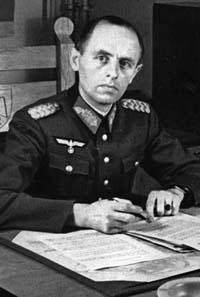
The fighting on the Eastern Front would turn out to be the largest military confrontation in history. The protracted fighting resulted in enormous casualties resulting from combat, starvation, exposure, disease, and genocide. Of the 70 million deaths that occurred in World War II, more than 30 million, many of who were civilian, occurred on the Eastern Front. Gehlen played a key role both in the German successes in 1941 and 1942 in the East and in slowing the Red Army’s drive to Berlin from 1943 to 1945.
Gehlen was born into a Roman Catholic family on April 3, 1902, in the town of Erfurt. In 1920 he joined the Reichswehr, the forerunner of the Wehrmacht. In 1923 Gehlen received a commission as a second lieutenant in the horse artillery. During his time in the Reichswehr, the studious young officer attended the German Staff College. Upon his graduation in 1935, Gehlen was promoted to captain and began serving on the Wehrmacht’s general staff. By the outbreak of the war he had been promoted to major.
At the time of the German attack on Poland in 1939, the young major was attached to an infantry division. The following year, Gehlen received an important posting when he became the liaison officer to Wehrmacht Commander-in-Chief Field Marshal Walther von Brauchitsch. Not long afterward, he was transferred to the staff of Wehrmacht Chief-of-Staff General Franz Halder. In July 1941 Gehlen began serving as a lieutenant colonel on the Eastern Front. During that time, he was assigned to the German General Staff’s Foreign Armies East unit as a senior intelligence officer.
Gehlen was reserved, somber, and deeply committed to the war effort. His plain looks and average build did not outwardly threaten his peers, but those features belied his driven and focused mental state. He might have seemed a bookworm, but he was a skilled interlocutor. He easily ingratiated himself with his superiors. Gehlen quickly perceived that the Foreign Armies East unit was in dire need of reorganization, and he set about to reorganize it as he saw fit.
Gehlen brought a fresh energy and creativity to his work that was in direct contrast to the majority of conventional staff officers. He hired clever men to work under him regardless of their military background. He methodically recruited the most talented individuals available in the Army for intelligence work. He did this by sifting through Wehrmacht personnel files for talented linguists, geographers, anthropologists, and lawyers. He even kept a sharp eye peeled for talented, promising junior officers within the unit who might rise to senior level with his guidance, direction, and tutelage.
Although Gehlen did see some action on the Eastern Front, his main contribution to the Wehrmacht was as a behind-the-scenes senior intelligence officer for the German General Staff. In essence, he was the de facto head of the Foreign Armies East intelligence unit. The unit quickly amassed a large data file on the Soviet Army.
Gehlen and his subordinates made good use of patrols, low-grade signals, and voice traffic to gather intelligence on Soviet forces. They became quite adept at gleaning maximum information from the interrogation of Russian prisoners of war by using captured Russian officers to interview newly captured prisoners. One of Gehlen’s strategies was to establish a luxurious POW camp in East Prussia that had as many as 80 single rooms to accommodate the most valuable prisoners who could assist the German war effort.
Gehlen made sure that all Russian prisoners received full rations, and he went to great ends to retain indefinitely those who could provide the best information regarding the ever-changing situation on the front lines. Nevertheless, some Russian POWs stubbornly refused to talk to Gehlen’s officers. When the fighting was not going well for the Russians and morale was low, the prisoners were quite willing to talk, but when the tide of war turned against the Germans, getting information from prisoners became increasingly difficult. To be sure, Russian prisoners feared that cooperating with the Germans would come back to haunt them. Getting reliable information from a Russian soldier was difficult at best, mainly because they came from a highly secretive society. More often than not, Russian officers and soldiers did not know the answers to many of the questions the Germans put to them.
In the summer of 1944 several senior German officers requested permission from Gehlen to use his offices as they refined their plans to assassinate German leader Adolf Hitler. Gehlen granted their request although he had very little to do with the actual planning. When the bomb plot failed, Gehlen successfully covered up his minor role. Gehlen wrote in his memoirs that an illness he suffered at the time helped him escape detection. He was stricken in July 1944 with a serious case of blood poisoning that required hospitalization. After a short time at a field hospital in Saxony, he was transferred to another hospital in Silesia. He was probably correct in surmising that his hospital stays contributed to the Gestapo overlooking him when it began its massive hunt for conspirators.
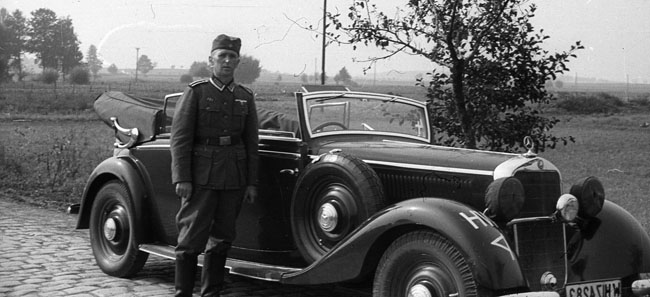
Gehlen was more of a realist than many of the other officers around him, but he also knew how to hedge his bets. Gehlen offered the German high command different scenarios in a June 1942 report for the progress of the war that year based on the success of planned offensives and expected counteroffensives, available Soviet resources, and Stalin’s views and objectives.
Gehlen observed that Russian losses in 1942 were fewer than in 1941. In addition, he noted that the Russians were increasing their manpower by eliminating exemptions from military service and mobilizing 1.4 million men who were born in 1925. Gehlen held that the Germans had to anticipate that the Russians, as they had done during the Battle of Moscow in the winter of 1941-1942, would again commit a large number of new units to the battlefield in the winter of 1942-1943. Yet on the whole, Gehlen maintained that there was still no clear sign that the German-Russian balance of power would change.
Gehlen believed it was entirely possible that the Germans would be able to overrun Leningrad, Stalingrad, and the northern Caucuses and establish a continuous front between Persia and the Arctic Sea. These successes would occur in large part because the Soviets were likely to stockpile their resources for a major counteroffensive that would occur at some point in the winter of 1942-1943.
“It is clear that the enemy has suffered major losses in the defeats of these last twelve months,” wrote Gehlen in his report. “The fighting so far has shown the German soldier to be justified in feeling he is superior to the enemy, and we have seen that where an assault is launched in force, success is guaranteed. But the enemy’s numerical superiority in manpower and equipment must not be underestimated.”
In September 1942, Gehlen penned a follow-up report titled “The Economic Potential of the Soviet Union.” In this report he detailed Russia’s declining rates of production in coal, iron ore, pig iron, and steel. He said that Soviet arms production was likely to suffer, but that the Soviets would compensate for this by stepping up the rate at which it received deliveries of equipment and material through the U.S. Lend-Lease program.
Gehlen also made a trenchant observation about winter fighting. By noting that the Russians were far superior at fighting in brutal winter conditions than the Germans, he held that the losses the Russians would inflict on the Germans during their winter offensives would preclude the Germans from renewing all of their offensives on the entire length of the Eastern Front in 1943.
Following the debacle at Stalingrad in the winter of 1942-1943, Hitler was growing increasingly desperate for a major victory to reverse the tide on the Eastern Front. His target would be Kursk, where he hoped to capture a large quantity of Russian equipment and troops and also shorten his own front line by 150 miles. On April 15, 1943, he issued the orders for the movement, code named Operation Citadel. Hitler initially proposed to launch the attack in late May, but he repeatedly postponed it to allow German forces time to get into position and for new weapons platforms to be deployed. As a result, the Russians had ample time to build up their defenses and pack as many units as possible into the Kursk salient. As time went by, Gehlen’s intelligence unit became less confident of a successful German operation. Gehlen was acutely aware that the Germans had lost any element of surprise they once had and that the Russians knew exactly where the Germans planned to attack.
When Operation Citadel began on July 5, it was immediately evident that the Germans would not achieve their lofty objective of cutting off Russian forces in the salient. Gehlen had gone to great lengths to warn the German high command that Citadel should not go forward, but Hitler refused to listen to reason.
“The course of the fighting on the Eastern Front these last few days has once again confirmed precisely every detail of the intelligence picture of the enemy we produced despite formidable obstacles that were put in the way of our assessment of the enemy’s distribution of forces,” Gehlen wrote on July 13, 1943. Operation Citadel was the last German strategic offensive on the Eastern Front. From that point forward, the Germans were on the defensive in Russia.
In the months and years that followed, Gehlen would badly misjudge most of the Soviet Army’s offensives on the Eastern Front. He insisted that Operation Mars, the Soviet offensive against Germany’s Army Group Center, was Stalin’s big push and that Operation Uranus, the Stalingrad pincer movement, which became a key turning point in the war, was an opportunistic, secondary offensive.
Despite these poor assessments, Gehlen retained his position and remained a respected intelligence officer until the end of the war. He managed to do this because of his deft political skills and because his vast network of secret agents in the Red Army and the Soviet Union continued to furnish him and his unit with extraordinary information. Without a doubt, such information was invaluable to the German Wehrmacht and played a key role in its ability to parry the thrusts made by the Red Army as it advanced west. Nevertheless, recent evidence suggests that Gehlen may have been the victim of Soviet manipulation on a large scale.
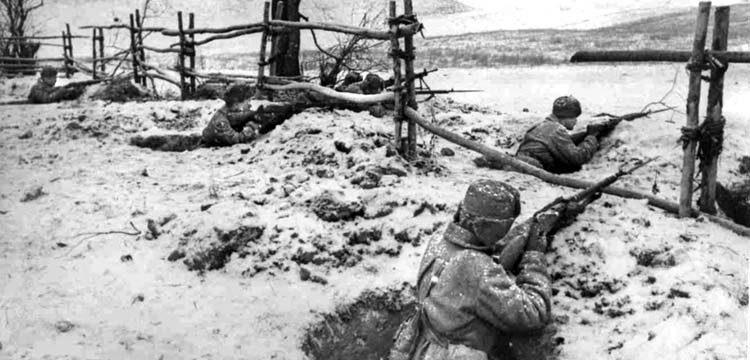
On February 27, 1945, Colonel-General Heinz Guderian took Gehlen to see Hitler for the last time at the Reich Chancellery in Berlin. Gehlen gave one last report at one of these meetings. Gehlen suggested to Hitler that the Germans use amplified phonograph records of tank tracks, marching feet, and other sound effects of large numbers of reinforcements to persuade the Russians that they had built up a large reserve force. The German situation had deteriorated to the point that it was all Gehlen could offer for the once powerful Third Reich.
Hitler embraced the idea, and he issued orders on March 5, 1945, for these sound effects to be used in a last-ditch effort to slow the Red Army. The following month, Hitler dismissed Gehlen as chief of eastern intelligence. “There is nobody less popular than a prophet of misfortune whose predictions have been proved true in every detail,” Gehlen wrote in his memoirs.
With the end of the war in Europe, a completely new chapter began in Gehlen’s life. Having realized early on that Germany was going to lose the war, Gehlen had begun making preparations to save his own skin. He ordered his staff to put his treasure trove of intelligence on the Red Army on microfilm. The files of the Foreign Armies East unit were sealed in watertight containers and buried in the Austrian Alps. Gehlen planned to use the archives as a bargaining chip with the Americans. His ploy would work remarkably well in large part because the Western Allies had virtually no intelligence sources in Eastern Europe.
Gehlen surrendered to the U.S. Army Counter Intelligence Corps in Bavaria on May 22, 1945. The Americans interrogated the German intelligence officer at Camp King near Oberursel. Gehlen quickly proved his worth to the Americans through his detailed knowledge of the Soviet military and his long list of clandestine contacts inside the Soviet Union. Gehlen knew that it was in his best interests to be forthcoming to the Americans, so he gave them access to his extensive intelligence archives in exchange for his freedom and the freedom of some of his closest colleagues in Nazi intelligence operations. Working in tandem with senior American military officers, American interrogators quietly removed Gehlen and his colleagues from official POW lists. On Gehlen’s behalf, the Americans succeeded in transferring seven of Gehlen’s associates to safe locations. Indeed, the Americans went so far as to fly Gehlen and his seven colleagues to Washington, D.C., in General Walter Bedell Smith’s plane. These events occurred at a time when the United States and the Soviet Union were still allies and were cooperating with each other in prosecuting war criminals. While Gehlen was in Washington for extensive debriefings in 1946, the Americans decided to allow him to reconstitute his unit in order to collect intelligence on the Red Army in Eastern Europe.
Gehlen was successful in reforming his unit and gathering together his numerous files. He operated under G-2 sponsorship from 1946 until 1949 when the CIA assumed responsibility. Between 1949 and 1956 Gehlen worked hard to ensure that his group obtained all of the legal requirements necessary. The former German Army intelligence officer’s English was fluent, and he was very much at ease around American officials.
In March 1956 Gehlen became the first president of the West German Federal Intelligence Service, which was directly accountable to the West German Chancellor’s Office. He worked in this capacity for 12 years. General Gerhard Wessel, who had been an adjutant in the Foreign Armies East unit, succeeded him in 1968.
Gehlen remained a professional military officer in habits and attitudes. Although he never went on active duty after World War II, he held the rank of lieutenant general in the Army reserve. A devout family man, he pursued a quiet life until he died in 1979.
